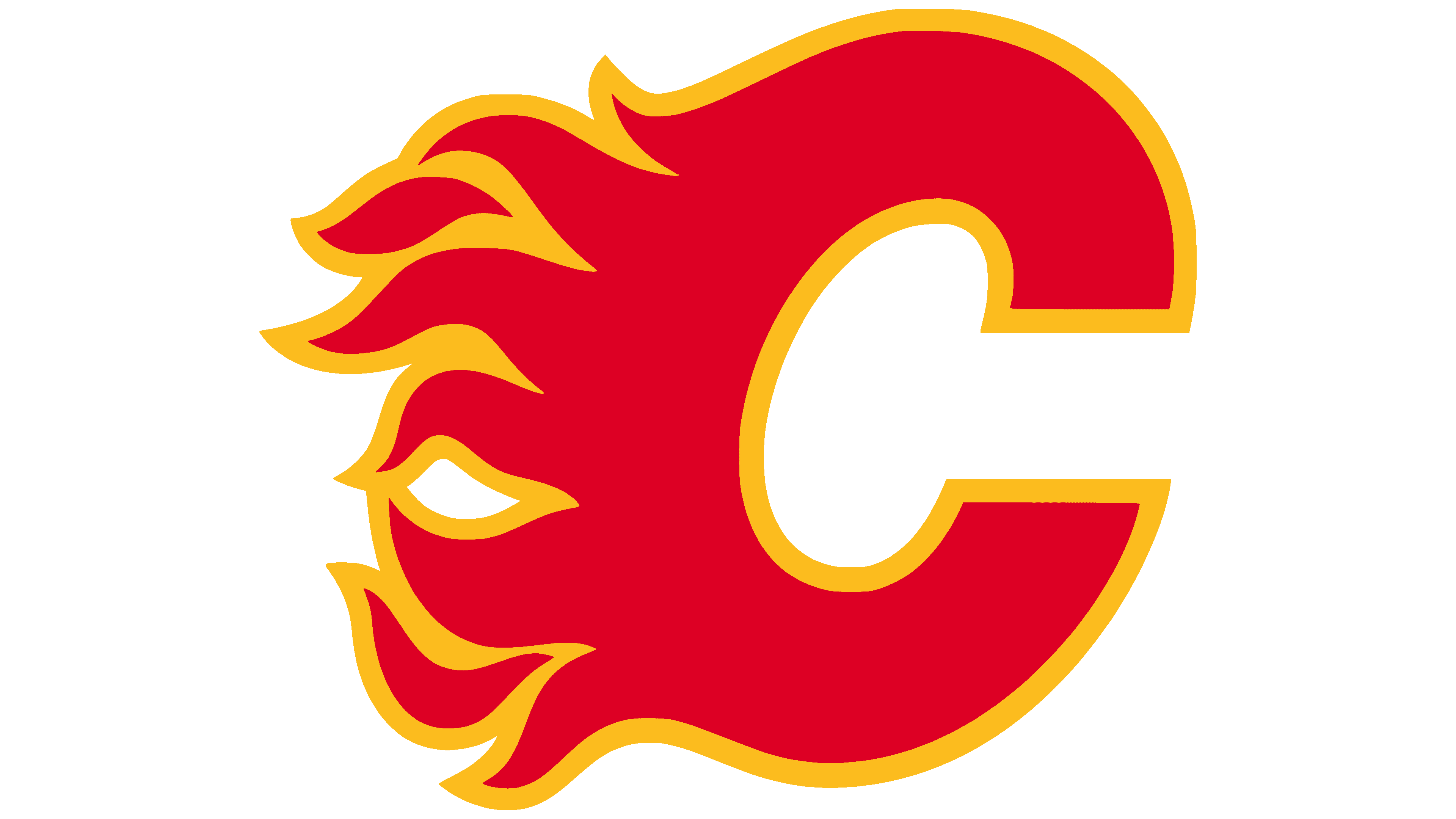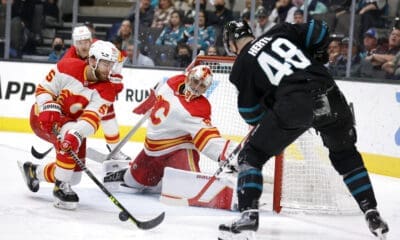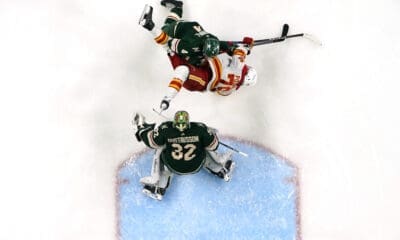Calgary Flames
Five Keys – How the Flames can survive the Canucks
A brief look at the keys to success in the first round matchup against the Canucks. Things we've touched on during the season and things that the Flames hopefully can do to win.

Liam touched on some aspects on some reasons on how the Flames can beat the Canucks. Beyond those, there are some keys to success that Calgary can hopefully employ or use to be successful in the first round. More so, a lot of the things listed below are either things they've done well this year or things they can improve upon.
Number One – Penalty Kill
The penalty kill has been discussed recently as a facet of the team that has had success this season. The initial ranking and subsequent concerns that may have existed were due to penalty differential and some mistakes throughout the season. Though a lot of those mistakes have been corrected and the penalty kill has improved greatly, the Flames need to continue that success.
The Flames finished 22nd in the league at 80.2% but what matters here is the sample size that has skewed this. They’ve taken a league-low 182 penalties against and tied with the New York Rangers for fourth in PPG against with 36. Only Chicago, Minnesota, and Carolina allowed less PPG against.
Vancouver finished the season with a 19.6% power play which was good for eighth in the league. Their 46 PPG are tied for 15th with Arizona, Chicago, and Ottawa. So the Flames will be facing a capable team with a decent power play. It’s going to be up to the Flames’ aggressive PK to shut them down. Puck movement and dictating the pace of the kill is going to lie squarely on the shoulders of Josh Jooris, Mikael Backlund, and Sean Monahan.
Number Two – Drawing Penalties
Calgary led the league in penalty differential which might be one of the more positive underlying numbers from this season. With an incredible +72 PenD, the next closest was Chicago at +52. So how did they do it? Johnny Gaudreau mostly. His +17 PenD led the team in drawing calls and that put him eighth in the league with a minimum of 500 minutes played.
Below is the 2014-2015 PenD leaders with a minimum of 500 minutes played, sorted by their PenD:
PN – Penalties taken, PN- – Penalties drawn, PenD60 – Penalty differential per 60 minutes, PenD – Penalty differential +/- format
Behind that Dennis Wideman surprisingly was +9 for the team which is a fantastic skill to have as a defenseman. The only drawbacks on the team however are Joe Colborne (-8), Matt Stajan (-7), and Deryk Engelland (-6) in PenD. So the necessity for discipline and drawing calls will increase the Flames chances at success.
Vancouver on the other hand, their -37 PenD was 26th in the league. They spent an awful lot of time on the penalty kill. The Flames ability to draw penalties is going to come in handy here. That said, the Canucks also had the second best penalty kill in the league at 85.7% so they’re going to be a formidable opponent down a man.
Number Three – Power Play
Calgary has had nothing but trials at even strength (excluding 4v4 play). To compensate, the Flames relied HEAVILY on the power play this season. The 13th ranked PP created 44 goals this season with Sean Monahan scoring a team high nine of them. Within that 13th ranked PP, the Flames shot near a league average of 12.4%, good for 15th in the league.
Due to the nature of the shot attempt generation problem for Calgary at even strength, the Flames will count on Wideman, Gaudreau, Monahan, and Hudler even more than before. Wideman's team-leading 21 points on the PP helped immensely down the stretch. Monahan's nine goals on the power play were great as well, and his hopefully continued success will be relied upon even more.
For a really fantastic understanding and accurate assessment, check out Garret Hohl's article on the impact of special teams minutes on goal differential. It's an incredibly great take on how Calgary has found a great volume of goals this season.
Number Four – Limit Zone Entries
Here is the single most important aspect of the keys to finding success. This is easily one, if not the biggest area of concern for the Flames this season. Even prior to the Mark Giordano injury, Calgary struggled at limiting zone entries. The biggest reason behind this seemingly comes from their inability to limit the opposition’s neutral zone control and move up ice. It comes from a roster composition issue as well as a systems issue in the team.
Whereas the team is successful on the PK, at even strength they find themselves willingly accepting this in many circumstances. To overcome this, the Flames need to adjust to what's in front of them: a Vancouver team who, despite being average, can still move the puck. Calgary needs to be aggressive in shutting down as many entries as possible to limit defensive zone time and shot attempts.
Number Five – Shot Attempts Against
The bane of Calgary this season has been the overwhelming shot attempts against. To this, the Flames have blocked an unhealthy number of shots. This has led to injuries, the most recent example being Lance Bouma. Even further to that, it's put an immense strain on the play of goaltending — and, well, the entire roster.
Calgary may have overcome the odds in the regular season being a 44.4% CF team at 5v5 (28th) but now more than ever is the importance of hopefully driving play. Vancouver (21st) comes in at 49.5% CF at 5v5 and are still a capable team despite some of their possession woes this season.
To do this, roster composition and lines need to be at the very best they can be:
- Do away with the likes of Brandon Bollig and Corey Potter.
- Adjust the TOI given to Wideman, his partner Kris Russell, and Deryk Engelland.
- Find ways to redistribute the ice time to David Schlemko, to Rafa Diaz (if healthy), and even Tyler Wotherspoon to an extent.
In closing…
It's not a surprise that when Wideman and Russell receive too much TOI, the team sees more shot attempts against. There needs to be no further reluctance on rolling the defensive pairings as evenly as possible. Giving TJ Brodie either David Schlemko or Rafa Diaz (when healthy) will be the best option. In small samples already, the impact is noticeable on the ice and measured with stats.
To Engelland's credit, he has scored two goals this season. Against him is a list of visual examples and underlying numbers that show he is not an option in a top-four placement. On a given day he's not the best option in a bottom pairing either.
If Hartley can fix this the best he can with what is available (hint hint), the Flames will more than likely find more relative success to what they've had. From a personal standpoint, I feel this team can probably take the Canucks to seven games IF they play their best hockey of the year.
Plus if Giordano is 100% and capable for a potential second-round (let's not get too far ahead of ourselves), the Flames might become an even more intriguing team. In the coming days, Ari and I will be breaking down the stats between both clubs for an even further in depth look at the series.
by Mike Pfeil









